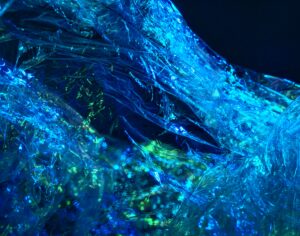22/07/2020
Artificial intelligence is increasingly an important tool in industry. Not just in computer science but in almost all fields of industry. And where an AI innovation provides a benefit to users, many would like to protect it with a patent.
The European Patent Office (EPO) recognises this. In 2017 the EPO published a study on the ‘Fourth Industrial Revolution’ that identified AI as a key enabling technology. As we reported previously, the EPO has held a conference discussing the patentability of AI. And the EPO has recently announced that their Berlin branch is to become a centre of expertise in AI. So it is worth looking at how AI inventions can be patented in Europe.
The EPO views AI as a subset of mathematical methods. This is significant because European patent law prohibits patenting subject-matter that relates to mathematical methods as such. In particular, any features of the claim that relate only to mathematical methods and do not contribute to the ‘technical character’ of the invention are not counted for the assessment of inventive step. This means that patent applications related to AI face an additional obstacle compared with inventions in other fields.
But in many cases we can show that an AI claim feature contributes to technical character. There are two ways to do this. The first way is when the AI is applied to a field of technology. The AI claim features contribute to technical character if they result in a technical effect in that field of technology. The other way is when the AI claim features themselves contribute to technical character.
Application to a field of technology
If the AI has an effect on how some other technology functions, then the use of AI can still be counted when assessing a claim’s inventive step . For example, if AI is used as part of a system for controlling a process and the output of the process is affected by the use of AI, then the use of AI can be counted in assessing the inventive step of the system. Essentially the AI has to have some real-world effect in a particular field of technology.
One common application for an AI is in classification of data, such as digital images, videos, audio or speech signals based on low-level features (e.g. edges or pixel attributes for images). This is generally considered a technical field in which the AI can make a technical contribution. Classification of arbitrary data records by an AI can also be patentable, provided the claim defines some technical use being made of the data records.
But, even if an AI claim feature is included in the assessment of inventive step, it does not help get a patent if the AI claim feature would be obvious. A claim including AI features that are all entirely standard may be hard to get granted unless there is a compelling reason why a standard AI process would not be used in that technical field. Patenting the basic use an ‘off-the-shelf’ AI tool is difficult in Europe.
There may be more hope if a claim’s AI features are particularly adapted to the technical field. For example, a claim specifying a particular configuration of a neural network that provides unexpected benefits for the technical field of application may be patentable. A claim specifying application-specific training data to define the AI’s function may also be patentable.
One example of a granted European patent involving the application of AI to a technical field is EP3073098B1, in which the granted independent claims specify the use of a neural network to control fan blade flutter in a gas turbine engine and that “the neural network is trained using a baseline expected deterioration profile validated and updated by serial number specific in-flight aircraft mission data from the engine“.
A mere mention in the claim of the use of a neural network would probably not have been enough to persuade the EPO to grant this patent. By including application-specific details of the neural network’s training, the EPO was persuaded that this use of AI was non-obvious.
Specific technical implementation
The other way to show that an AI claim feature contributes to technical character is where the AI claim feature is particularly adapted in its design, motivated by technical considerations of the internal functioning of the computer on which it operates. The AI claim feature contributes to technical character because it results in an efficient hardware implementation.
The EPO is unlikely to accept that an AI contributes to technical character if it is an algorithm that does not consider the internal function of the computer on which it operates. This is the case even if the algorithm is new and particularly efficient and might bring technical advantages such as a reduced number of operations when performed using a computer.
The granted claims in EP3446260B1 are an example of how an AI can contribute to technical character by considering the internal functioning of the computer. The independent claims relate to training a recurrent neural network on a plurality of training sequences using backpropagation through time. In particular, the training includes “determining a training policy for processing the training sequence, wherein the training policy defines when to store in a memory of the one or more computers forward propagation information during forward propagation of the training sequence, the training policy being such as to balance a trade-off between caching of forward propagation information and re-computation of forward propagation information during backpropagation“.
The EPO accepted that these AI steps are motivated by the internal functioning of the computer that performs them. They result in an efficient hardware implementation because, according to the patent, memory is more efficiently utilised and less memory is needed.
How can applicants increase their chances of patenting AI in Europe?
Patenting AI is possible in Europe. But there are obstacles. Fortunately, there are things that an applicant can do when drafting a patent application that will increase their chances of getting a European patent.
If the AI invention is ‘merely’ an improved algorithm then the EPO is unlikely to consider the AI features in assessing inventive step unless the AI is applied in a technical field. Applicants can improve their chances of obtaining commercially useful protection in Europe if the application includes embodiments in which the AI is applied to some of the most commercially important technical fields. These might include computer vision, image processing, speech recognition, control systems, and robotics. If the EPO examiner cannot be persuaded of the technical contribution of the AI by itself, then the claims can be limited to one or more of these fields and useful protection is still obtained.
If an applicant thinks that their AI invention is designed through consideration of the internal functioning of the computer on which it operates then it is helpful to give details of this in the application as filed. An explanation in the application as filed gives weight to any arguments on this with the EPO. But it is still worth including details of embodiments applying the AI to a technical field. This is a precaution in case the EPO examiner is not convinced that the AI makes a technical contribution by itself. In such cases the applicant can limit the claims to an application and still get protection in a commercially important field.
If the invention is the application of AI to a different technical field, then an applicant can improve its chances by including some description of how the AI is to be adapted to the technical field. A basic application of a standard AI might be considered obvious. In the turbine example above, a description of the turbine-specific training data helped persuade the EPO examiner that the invention was not an obvious implementation of an ‘off-the-shelf’ AI.
Come talk to us at Reddie & Grose if you are interested in patenting AI inventions in Europe or would like more information about the obstacles and how they can be overcome. We would be glad to help.
This article is for general information only. Its content is not a statement of the law on any subject and does not constitute advice. Please contact Reddie & Grose LLP for advice before taking any action in reliance on it.


